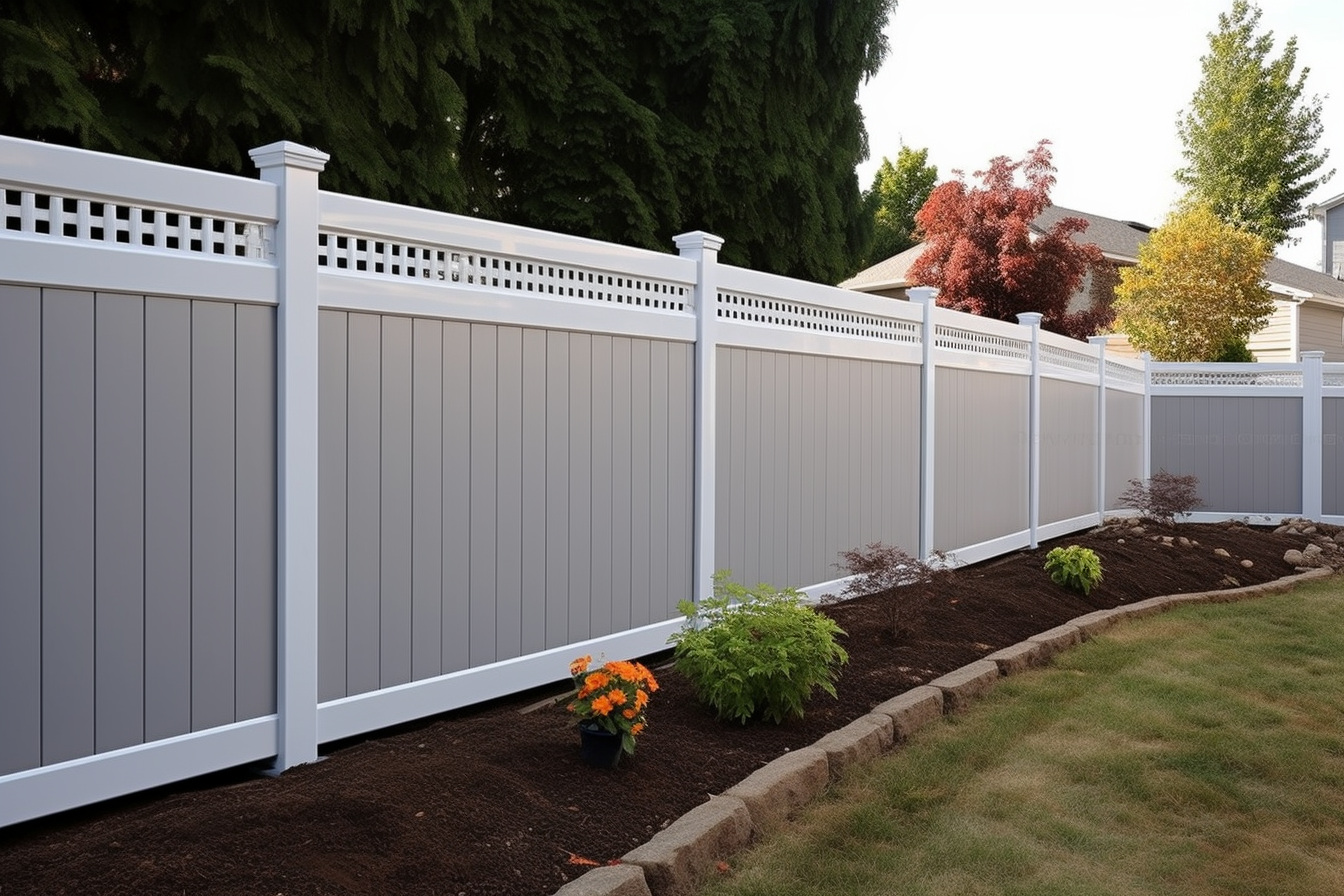A guide to choosing the perfect garden fencing
Did you know that the right garden fencing can enhance your property value? Explore our comprehensive guide to discover the best options for your outdoor space! In many homes, gardens serve as both a sanctuary and a means of self-expression. Whether you are a homeowner seeking privacy or a gardener wishing to protect your plants, the importance of garden fencing cannot be overstated. A well-chosen fence enhances aesthetic appeal, provides security, and can even increase property value. This article will cover various types of garden fencing, the benefits each provides, how to select the right material, installation tips, design ideas, and maintenance considerations. With so many options available, understanding your specific needs becomes crucial in making the best decision for your outdoor space.

What are the most popular types of garden fencing?
Garden fencing comes in a variety of materials and styles, each offering unique benefits. Some of the most common types include:
-
Timber fencing: A classic choice, timber fences are versatile and can be customized to suit various garden styles. They offer natural beauty and can be easily painted or stained to match your preferences.
-
Metal fencing: This includes options like wrought iron, aluminium, and steel. Metal fences are known for their durability and low maintenance requirements. They’re ideal for creating an elegant, open look in your garden.
-
Vinyl fencing: A modern alternative, vinyl fences are resistant to rot, pests, and weathering. They come in various styles and colors, requiring minimal maintenance over time.
-
Bamboo fencing: For a more eco-friendly option, bamboo fencing provides a natural, tropical look. It’s lightweight, sustainable, and can create an attractive backdrop for lush gardens.
-
Composite fencing: Made from a mix of wood fibres and recycled plastic, composite fences offer the look of wood with enhanced durability and lower maintenance needs.
What are the key benefits of garden fencing?
Garden fencing offers numerous advantages that extend beyond mere boundary demarcation:
-
Privacy: Fences create a secluded space for relaxation and outdoor activities, shielding your garden from prying eyes.
-
Security: A well-constructed fence can deter intruders and keep pets and children safely within your property boundaries.
-
Noise reduction: Certain types of fencing can help reduce noise pollution from nearby roads or neighbours.
-
Wind protection: Fences can act as windbreaks, protecting delicate plants and creating a more comfortable outdoor environment.
-
Property value enhancement: An attractive, well-maintained fence can boost your home’s curb appeal and potentially increase its market value.
-
Boundary definition: Fencing clearly defines property lines, preventing potential disputes with neighbours.
How do you choose the right material for your garden fence?
Selecting the ideal material for your garden fence depends on several factors:
-
Climate: Consider your local weather conditions. For instance, in coastal areas prone to salt air, aluminium or vinyl might be more suitable than wood.
-
Maintenance requirements: If you prefer low-maintenance options, metal or vinyl fencing might be more appropriate than wood, which requires regular staining or painting.
-
Aesthetics: The fence should complement your home’s architecture and garden style. Traditional homes might benefit from classic timber fencing, while modern designs could pair well with sleek metal or composite options.
-
Purpose: Determine whether your primary goal is privacy, security, or decoration. This will influence the height and style of fencing you choose.
-
Budget: Different materials come at varying price points. While initial costs are important, also consider long-term maintenance expenses when making your decision.
What are some essential installation tips for garden fencing?
Proper installation is crucial for the longevity and effectiveness of your garden fence:
-
Check local regulations: Before installation, ensure you comply with local council regulations regarding fence height, placement, and materials.
-
Mark your boundary: Clearly mark your property line to avoid disputes with neighbours.
-
Prepare the ground: Level the area and remove any obstacles that might interfere with fence post placement.
-
Use quality materials: Invest in high-quality posts, panels, and fixings to ensure durability.
-
Consider professional installation: While DIY is possible, professional installation can ensure proper techniques are used, especially for complex terrains or materials.
What are some unique design ideas for garden fencing in Australia?
In Australia, garden fencing can be both functional and a stunning design element. Here are some unique ideas:
-
Living fences: Incorporate climbing plants or espalier fruit trees into your fence design for a green, natural barrier.
-
Mixed materials: Combine different materials like timber and metal for a contemporary look that adds visual interest.
-
Horizontal slat fencing: This modern style allows for airflow while maintaining privacy and can be made from timber or composite materials.
-
Gabion fencing: Using wire cages filled with rocks, this type of fencing offers a rugged, natural look perfect for Australian landscapes.
-
Laser-cut panels: Metal panels with intricate designs can create beautiful shadow patterns and add a unique touch to your garden.
What are the cost considerations for garden fencing in Australia?
When planning your garden fencing project, it’s important to consider the various costs involved:
| Fencing Material | Average Cost per Linear Metre (Supply Only) | Average Cost per Linear Metre (Installed) |
|---|---|---|
| Timber | $50 - $150 | $100 - $300 |
| Colorbond Steel | $60 - $100 | $120 - $250 |
| Aluminium | $80 - $120 | $150 - $300 |
| Vinyl | $70 - $130 | $140 - $280 |
| Wrought Iron | $300 - $600 | $450 - $850 |
Prices, rates, or cost estimates mentioned in this article are based on the latest available information but may change over time. Independent research is advised before making financial decisions.
These costs can vary significantly depending on factors such as the complexity of installation, site accessibility, and regional differences. Additionally, consider ongoing maintenance costs, which can be lower for materials like vinyl or aluminium compared to timber.
Choosing the perfect garden fence involves careful consideration of your specific needs, budget, and local environment. By understanding the various types of fencing available, their benefits, and installation requirements, you can make an informed decision that enhances both the functionality and beauty of your outdoor space. Remember to balance initial costs with long-term durability and maintenance needs to ensure your garden fence remains an asset to your property for years to come.




